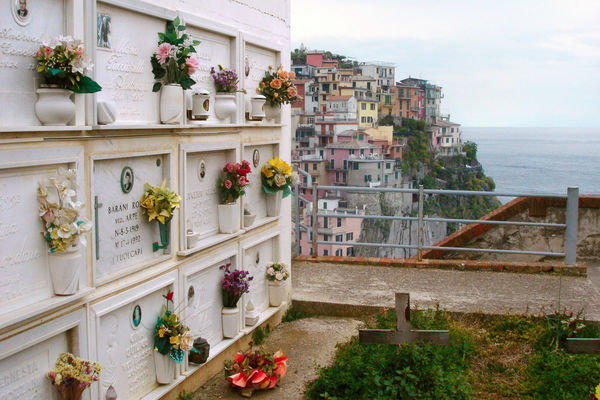
Celebrating the Day of the Dead
There’s much to celebrate about the autumn season in Italy. Unlike summer, which is the period where tourists flock to the boot from all over the world, the fall is really a season for locals. It’s the period of the olive collection and the pressing of the olives for turning them into oil, the making wine from the grapes that have matured ever so perfectly during the summer heat, and the period for chestnut, a beloved product that just seems to scream fall.
Mid-fall is also a somewhat somber period, with the celebration of the Feast of All Saints and All Souls Day, also known as the Day of the Dead.
Not strictly an Italian holiday, the commemoration of the dead occurs every November 2nd, and is a way to remember loved ones, and also a day full of symbols and cultural implications. Many countries, on this occasion, follow their traditions to pay homage to those who are no longer there.
The day before the feast of the dead is All Saints’ Day, this festival was instituted to pay homage to all those saints of Christianity who have no place in the calendar.
In Italy, the Day of the Dead is an opportunity to pay homage to the dead by visiting the cemetery. But that’s not all, the customs and symbolic rituals that take place on this particular day are different and vary from area to area. Many of these take up the ancient pagan belief of the return of the dead to earth and the need to give them refreshment after the long journey.
In Milan and Tuscany, for example, pan dei morti is prepared, a poor dessert offered to the deceased between the first and second of November, when, in fact, they are said to come back from beyond.
In Friuli, however, it is common to leave buckets full of water with a lit lamp. Food, usually bread, is placed on the table to allow the dead, returning for the night, to refresh themselves. Even more elaborate are the preparations in Trentino, where the table is set for the night, and the church bells ring to call out to the souls.
Among the customs now abandoned, in Rome the tradition wanted loved ones to go and keep company with the deceased, having a meal in the cemetery. In other areas of Italy, on the other hand, this day was used to make generous gestures. In Emilia Romagna, for example, the poor went from house to house asking for the “carita di murt”, or the charity of the dead.
The Day of the Dead is also a feast for the palate and the typical recipes that are prepared on this occasion are different from region to region.
A chickpea soup is a typical Piedmont preparation and is enriched and flavored by the addition of pork ribs, but there are also those who prefer to accompany it with cotechino or pumpkin. It’s not uncommon on these occasions to leave an extra dish at the table to satiate the soul of the visiting deceased.
The bones of the dead are traditional cookies for the commemoration of the dead. Typical of the Parma area, but also widespread in many other areas of Italy, they are prepared with a base of short crust pastry covered with sugar or chocolate icing, to which almonds are be added.
The bread of the dead is typical of the areas of northern Italy and its origin dates back to an ancient Milanese tradition linked to the cult of the dead. The bread is made with raisins, almonds, cinnamon and nutmeg and is very spicy.
Instead, the Sicilian sugar puppets and Sardinian papassini are intended for the little ones. Both are traditionally given to children, telling them that they were brought as a gift from the souls of the deceased.

What to Pack for Italy
Cosa Mettere in Valigia per l'Italia
Everyone is always asking me what they should pack for Italy,
so I’ve created a quick reference guide that you can use for your next trip.
Hint: You don’t need nearly as much as you think you do!

Leave a Reply